ATSC113 Weather for Sailing, Flying & Snow Sports
Arctic Outflow
Learning Goal 6l: Recognize the large-scale weather pattern associated with Arctic air and outflow
Skiing hazards
Arctic air (or an Arctic airmass) presents two major hazardous weather conditions to skiers: (1) bitterly cold air, and (2) outflow winds. Remember that when you are not properly dressed for cold temperatures, frostbite and hypothermia can result. Winds can combine with these cold temperatures to make it feel even colder; this is called wind chill. The coldest temperatures occur when Arctic air is present. In this section you'll learn how to recognize Arctic air on weather maps.
Origins and movement
An Arctic airmass originates from the Arctic. It forms in the Arctic in cold, clear conditions found under a high pressure system. This air is blown southward by northerly or northeasterly winds. Arctic air is very cold, dense, shallow, and stable. Since it is so dense, it flows similarly to the way water does. Picture a flood of water moving southward from the Arctic. It moves quickly and unimpeded across the prairies of northeast BC and Alberta.
This shallow, dense air cannot easily move up over mountains like the Rockies (recall that stable air doesn't like to move vertically upwards). However, once it piles up deep enough on the east side of the Rockies, it starts moving south and west towards the BC South Coast, through valleys and locally lower mountain passes. Often at the same time, it surges southward into the northern plains of the USA.
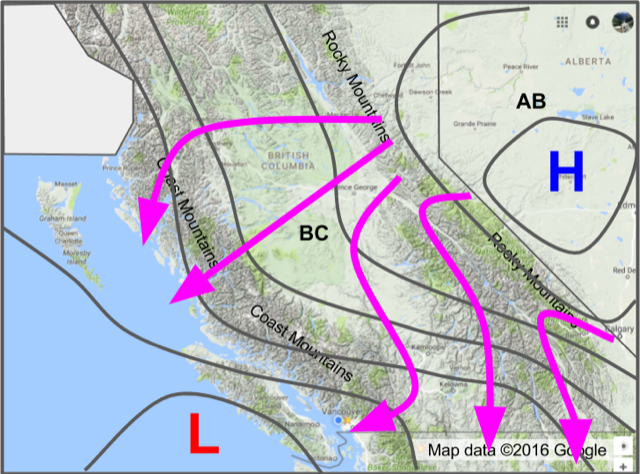
Fig. 6l.1 - A typical pressure pattern set up for Arctic outflow. High and low pressure and MSLP isobars are shown. The pink arrows indicate typical pathways of cold, shallow, stable Arctic air as it moves through the mountain ranges of BC towards the Coast. (Credit: West)
Recognizing Arctic air on forecast maps
Here, we'll apply your knowledge of reading temperature on weather maps (Learning Goal 5a), identifying fronts (Learning Goal 5f), and recognizing high pressure patterns (Learning Goal 5e). Take a look at the 85.0-kPa pressure-level temperature map below (Fig. 61.2). In the 85.0-kPa temperature field, very cold temperatures can be seen over northeast BC. There is a very strong temperature gradient (temperature contours packed closely together) associated with a cold front, stretching from northwest to southeast across northern BC. Cold fronts that usher in Arctic airmasses from the north are referred to as Arctic fronts because of their Arctic origin. One way to recognize these fronts is by the very cold temperatures that follow them — typically -15°C and colder. Note that 85.0 kPa is approximately 1500 m above sea level, which is ~1000 m above the ground in the prairies of northeast BC. The relatively shallow Arctic airmass is still visible at this height.
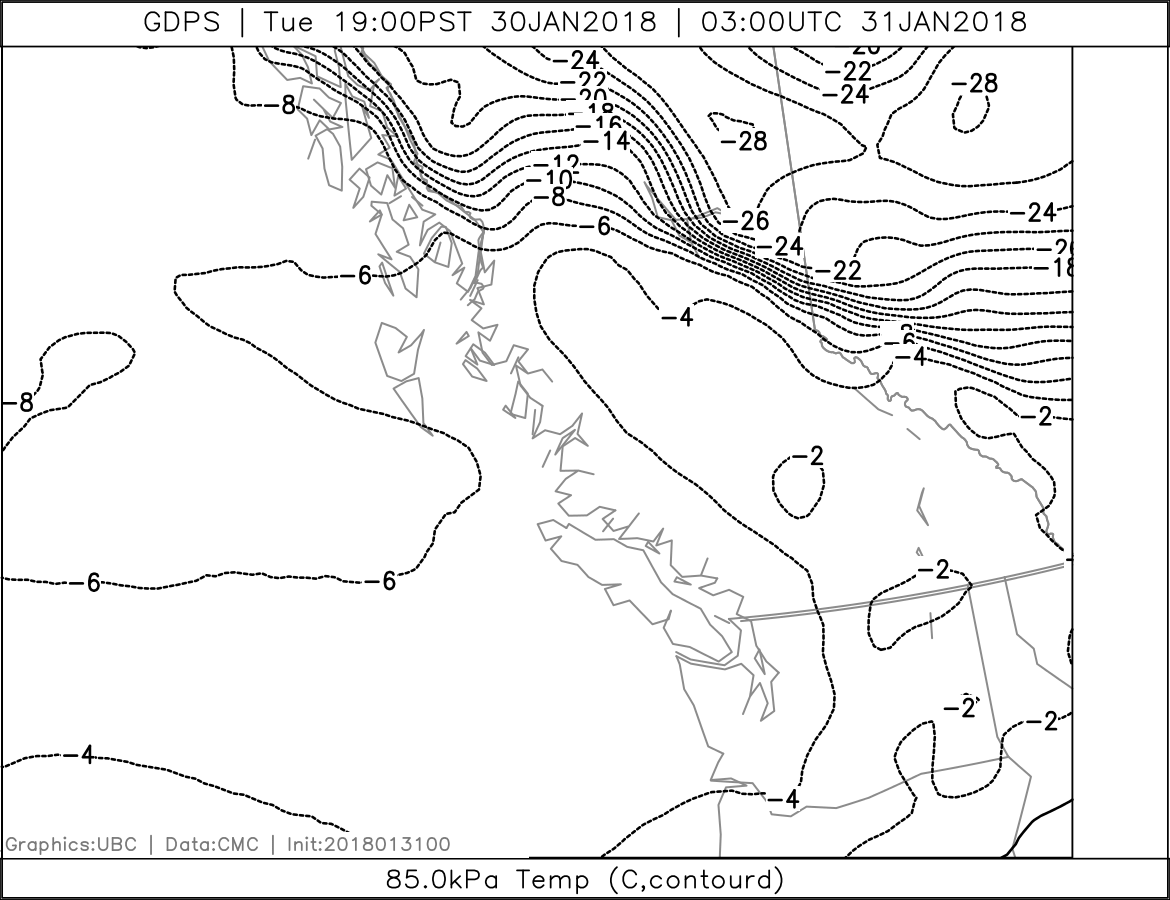
Fig. 6l.2 - An 85.0-kPa temperature map showing a strong temperature gradient in northeast BC associated with an Arctic front moving south and west.
Next, the map of sea-level pressure (Fig. 6l.3) shows strong high pressure in far northern BC, associated with the arctic airmass. Also note the pressure gradient. Recall that at the surface air often flows across pressure contours from high to low pressure, which means there is north-northeasterly flow in this area. This pressure gradient is approximately co-located with the temperature gradient; the cold dense air within the Arctic airmass causes there to be higher pressure at the surface.
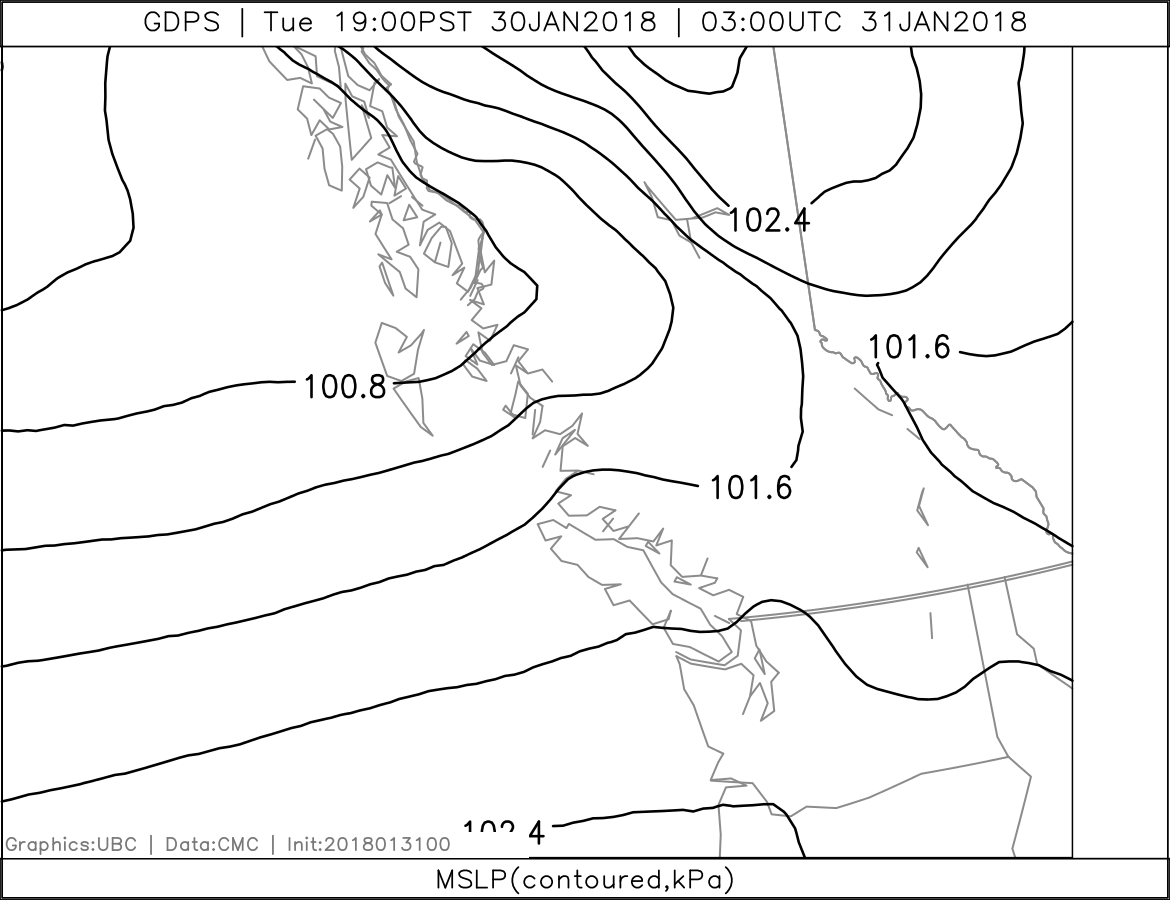
Fig. 6l.3 - A mean-sea-level pressure (MSLP) map showing the associated pressure field.
As we have seen previously in this course, forecasters often like to look at multiple variables within one map to get a complete sense of what the weather is doing, by combining all the relevant information. So now, let's combine the temperature and pressure fields with other fields to give us a more comprehensive picture (Fig. 6l.4). Take some time to look at each panel and the variables that are presented.
The wind barbs in both panels indicate that the wind over northeast BC is blowing from the north and northeast, moving the Arctic airmass south-southwestward. The 85.0-kPa moisture field (RH, left panel) indicates that there is probably cloud cover, and the precipitation field (right panel) indicates that there is precipitation (in the form of snow) accompanying Arctic fronts. These can sometimes bring blizzard conditions, even at low elevations, as they move southward.
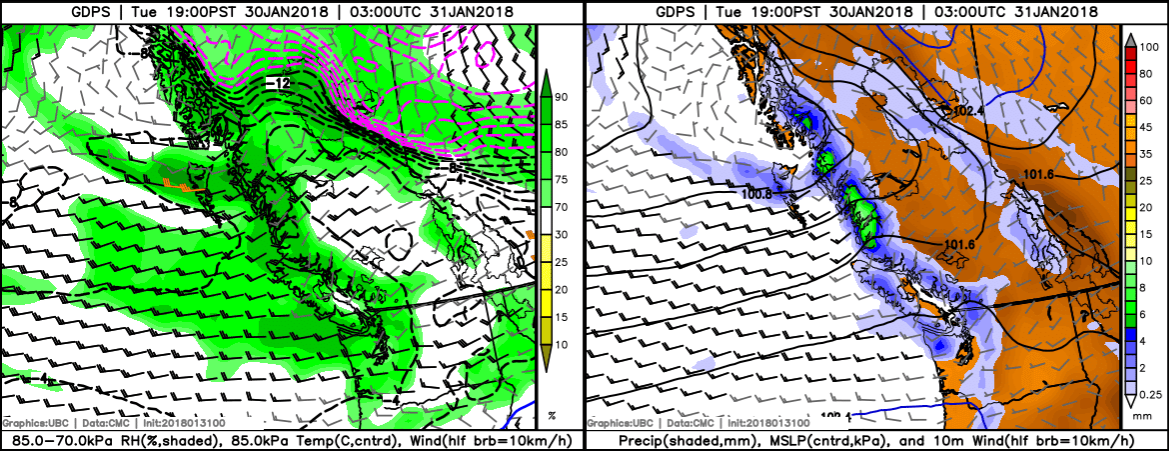
Fig. 6l.4 - (Left) An 85.0-kPa pressure-level map from the evening of 30 Jan 2018 showing an Arctic airmass present in northern BC. Temperature (Temp) is contoured with dashed lines, relatively humidity (RH) is shaded in colour, and wind barbs display wind speed and direction. (Right) Mean sea-level pressure map showing high pressure in far northern BC. Sea-level pressure is contoured in black, precipitation is shaded in colour, and wind barbs indicate wind speed and direction.
Figure 6l.5 shows maps from five days later on the evening of 4 Feb 2018. In the left panel of figure 6l.5, note that the coldest air remains over far northern BC and to the east of the Rockies. However, the leading edge of the temperature gradient has progressed south and westward into central BC, bringing cold air with it. The associated leading edge of the pressure gradient (right panel, harder to discern), and the precipitation associated with the Arctic front, have reached the east side of the Coast Mountains. In the northern Coast Mountains the very cold, dense, stable air is blocked by the mountains, and has started to pile up on their eastern side. This is indicated by the strong temperature gradient on the eastern side of the northern Coast Mountains (left panel), and to a lesser extent by the pressure gradient (right panel).
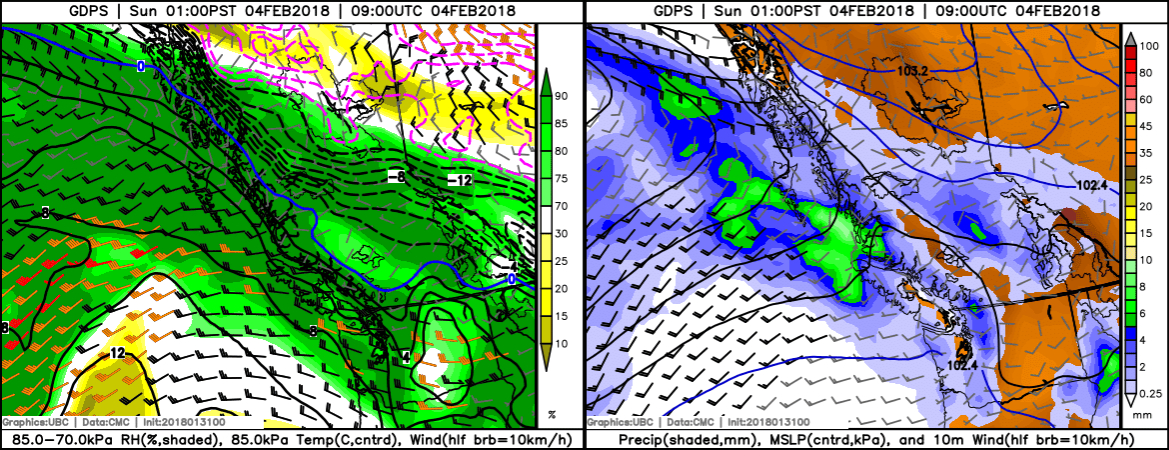
Fig. 6l.5 - As in Fig. 61.4, but five days later on 4 Feb 2018.
If this Arctic front had continued to progress south and westward (in this case it did not), it would have made it to southwest BC. When this happens, strong temperature and pressure gradients form on the eastern side of the southern Coast Mountains.
The pressure gradient forces the cold air out to the coast via the lower-elevation mountain valleys and passes. This can lead to high winds in the Coast Mountains, particularly within/near valleys that span the width of the Coast Mountains. The winds become fastest when valleys widen. The most familiar example is here in the Fraser Valley. The lower Fraser Valley widens as it gets closer to the coast (near Chilliwack, Abbotsford, and Vancouver), and moderate to strong easterly outflow winds often result in cases like this (see Learning Goal 6m and Fig. 6l.8 below).
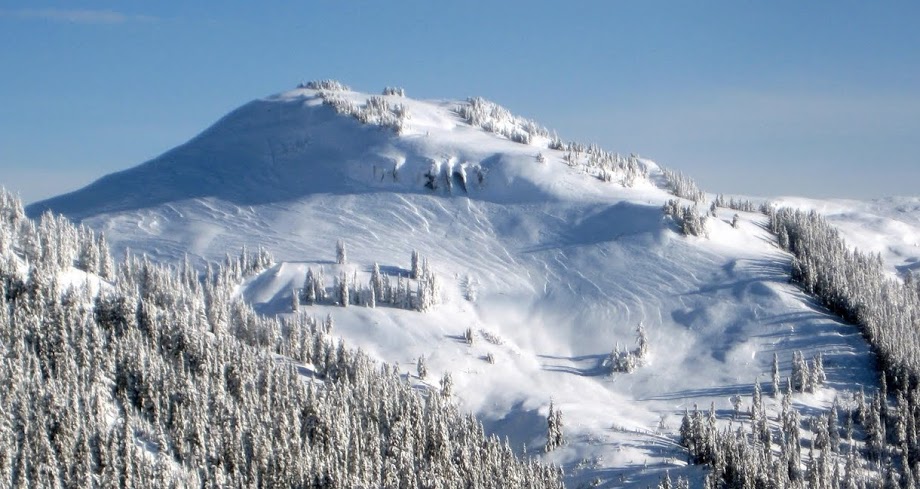
Fig. 6l.6 - Wind-affected snow resulting from outflow winds, near Mount Brew, BC. (Credit: West)
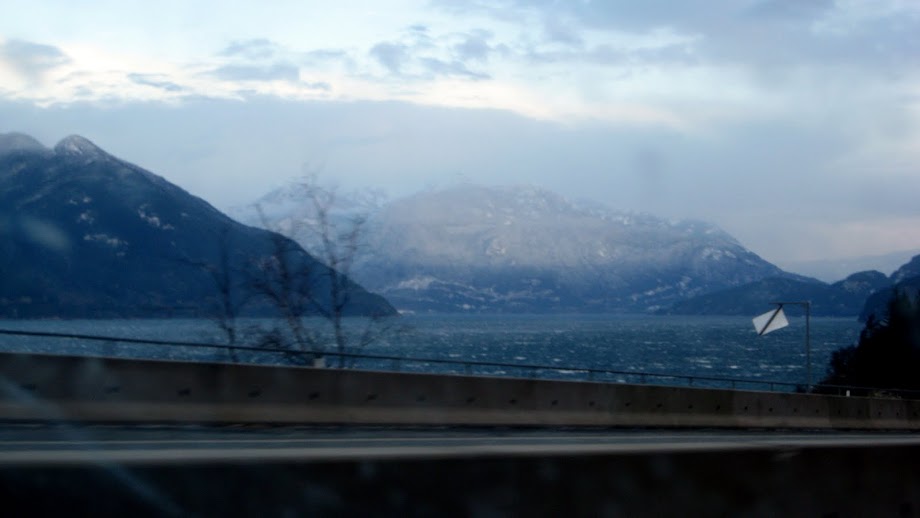
Fig. 6l.7 - Howe Sound (just south of Squamish) on the same day as in Fig. 6l.6. Northerly outflow winds were blowing strong, forming whitecaps on the water. Note the blowing road sign. (Credit: West)
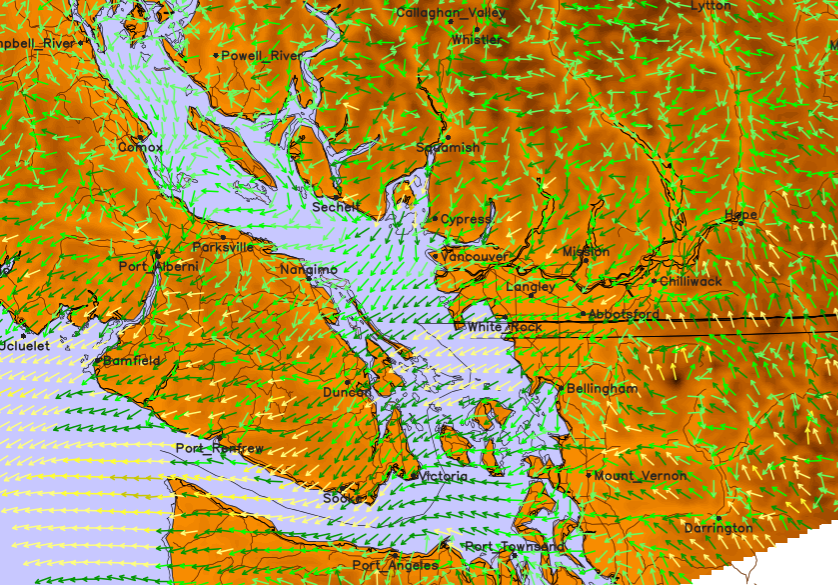
Fig. 6l.8 - Surface (10-m) wind output from an NWP model showing moderate outflow winds near White Rock and Abbotsford (yellow arrows). The wind vectors show wind direction (northeasterly) and the yellow colors indicate speeds of greater than 30 km/h. Also, note the northerly winds within the Fraser Canyon, north of Hope; and northwesterly winds blowing down along Harrison lake, north of Chilliwack. Winds are also funnelling out of Howe Sound, just south of Squamish.
Surface weather observations
Another way to look for Arctic air moving down from the north in real-time is using surface observations.
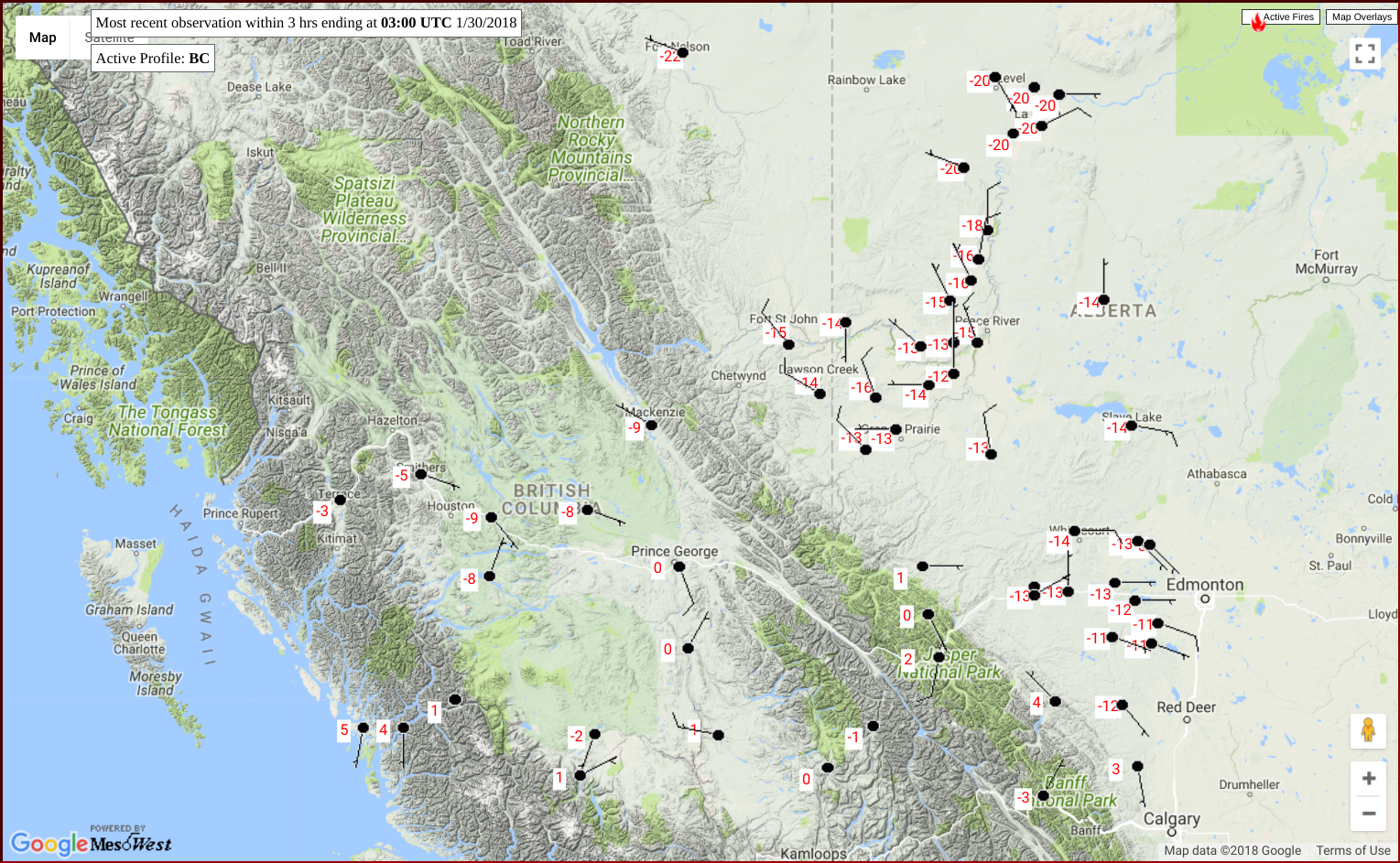
Fig. 6l.9 - Surface observations from the evening of 30 Jan 2018, as an Arctic airmass was moving through northeast BC. Wind barbs are displayed, along with temperatures (°C). (Credit:MesoWest/Google)
Note the northerly winds and very cold temperatures over northeast BC and northwest Alberta in Fig. 6l.9. These are contrasted against warmer (near freezing) temperatures south of the Arctic front in Central BC and southern Alberta.
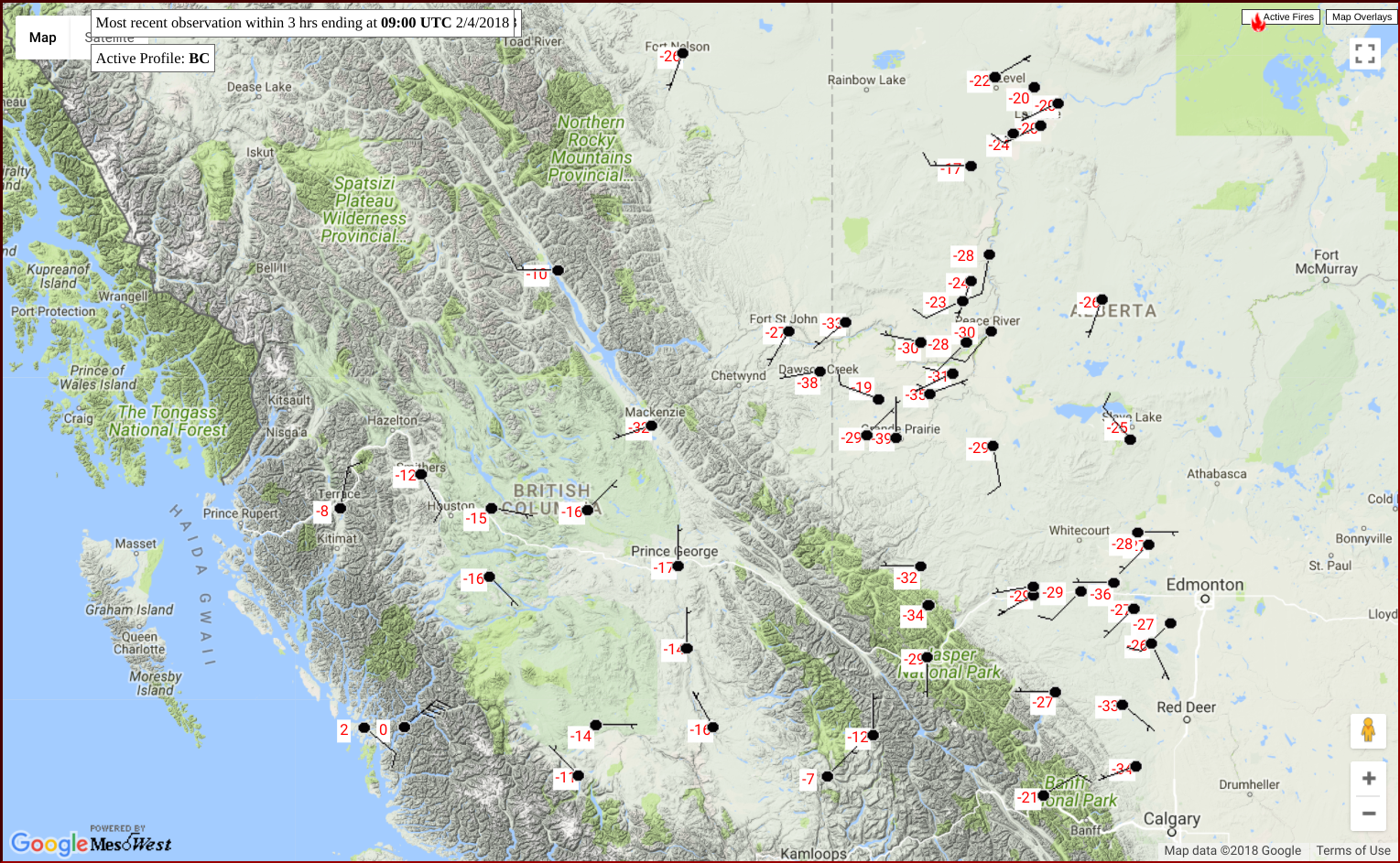
Fig. 6l.10 - Surface observations from just after midnight local time on 4 Feb 2018, five days after Fig. 6l.9. Wind barbs and temperatures (°C) are shown. (Credit: MesoWest/Google)
Fig. 6l.10 shows the surface observations five days after Fig. 6l.9. The Arctic front has progressed south and westwards, indicated by the surface temperatures over central BC, northeast BC, and western Alberta range from -15 to -35°C (within the Arctic airmass). A more typical Arctic front would move this distance in just one day. The cold, dense, shallow air is just reaching Kamloops at the very bottom of the figure. It is mostly unable to surmount the Coast Mountains to the west. Strong northeasterly winds are being reported at one station within the Coast Mountains. It is possible that Arctic outflow winds have made it over a low mountain pass out to the coast (see Learning Goal 6m), but the really cold Arctic air has not.
Keywords: Arctic airmass, outflow winds, wind chill, high pressure, cold front, temperature gradient, Arctic front, pressure gradient
Figure Credits: Stull: Roland Stull, West: Greg West, Howard: Rosie Howard